Beneath our feet lies a vibrant yet under-appreciated ecosystem. Far more complex than mere dirt, soil is a matrix of mineral particles, organic matter, living organisms, water, and air. Scientists have developed many measures for evaluating how well a particular piece of earth performs life-sustaining functions like regulating water, supporting plants and animals, filtering and buffering pollutants, and cycling nutrients. But any gardener who pays close attention to their existing soil conditions can gain insights to improve the overall health of the land they tend. If you’d like to give your soil a helping hand, here are a few ideas to get you started.
Get familiar with your soil’s baseline characteristics
Some aspects of soil health are impacted by gardening practices, but your soil’s texture, pH, and nutrient dynamics will remain mostly the same over time. Evaluating these stable characteristics through testing and observation is an excellent first step in your soil health journey.
Soil texture is determined by particle size
Inorganic mineral particles make up about 40 to 45% of most soils, and the sizes and shapes of these particles have a strong effect on how the soil functions. Sand particles are the largest, followed by silt, then clay. In addition to being extremely tiny, clay particles are flat, which means they tend to pack together tightly. The relative proportions of sand, silt, and clay affect nutrient availability, water-holding capacity, and soil cohesiveness. For example, clay soil holds nutrients and water more tightly than sandy soil, while sandy soil’s larger particles and pore spaces make it less susceptible to compaction and waterlogging than clay or silt.

Soil pH influences nutrient availability and soil chemistry
The acidity or alkalinity of soil, expressed as a pH value, is mainly determined by local geology and climate. Gardeners and growers can use amendments to temporarily adjust pH value, but accurate testing is required to do so effectively. Whether you send a soil sample to a laboratory or test at home with a digital pH meter or test strips, follow all instructions carefully to ensure accurate results. Most garden plants prefer neutral to slightly acidic soil with a pH value around 6.5 to 7, while others prefer more acidic or alkaline soil. Your local university extension office can provide more information on adjusting soil pH and recommend plants that are naturally adapted to your existing soil conditions.
Evaluate nutrient status before amending soil
Testing for soil nutrients is a cost-saving measure that also prevents plant health problems. A basic soil test from a reputable laboratory will identify the levels of macronutrients like nitrogen, phosphorus, and potassium, and you can get additional tests for micronutrients. It’s important to note that the nutrient levels shown in traditional soil lab tests are not necessarily the levels available to your plants. Factors like nutrient form (organic or inorganic) and soil moisture will dictate whether stored nutrients can be mineralized through soil biology into forms available to plants. The key to managing soil nutrient levels is to test regularly, compare your results over the years, and keep an eye out for plant symptoms of nutrient deficiency such as yellow or brown leaves, stunted growth, and delayed fruiting.
| Garden science |
A test for soil texture
You can estimate the percentages of sand, silt, and clay in any soil with a simple at-home test.
You will need:
- A jar with a tight-fitting lid
- A soil sample taken from about 6 inches below the soil surface, broken up into single particles, with rocks and organic debris removed
- A ruler
- A marker
- A watch, stopwatch, or timer app
To perform the test, fill ¹⁄3 of the jar with soil and the rest with water. Cap the jar tightly and shake until the sample is well dispersed. Start the stopwatch as soon as you place the jar on a level surface. The largest sand particles will begin to settle out first. After a minute, mark the height of the sediment on the jar—this is the sand content. Leave the jar undisturbed and return after 2 hours. Mark the height of this layer, which is the silt content. After 24 hours, mark the height of the final layer, which is the clay content. Using a ruler, measure and record the height of each layer, and divide this by the total height of all three layers. Multiplying this number by 100 will give you a rough percentage of the particle type in your soil. For example, if the total height of all three layers is 4 inches and the sand layer is 1 inch tall, sand makes up ¼ or 25% of the sample.
What does healthy soil look like?
Soil health indicators provide a framework for assessing how well a particular soil functions. Some indicators can be tested in a lab, but there are many key elements that you can observe yourself.
Healthy Soil Sticks Together
Soil structure describes the tendency for soil particles to form aggregates, which are clusters of mineral particles and organic matter held together by sticky biological residues exuded by plant roots and soil organisms. Soil with good structure has an abundance of open pore spaces within and between aggregates that allow air and water to move through it efficiently. Poor soil structure restricts air and water movement.
To assess structure, dig up large chunks of soil from about 6 inches below the surface in various spots around your garden. Observe whether the particles are clumped into aggregates with a texture that resembles cottage cheese or moist chocolate cake. Unhealthy soil structure will appear loose and grainy, without many soil particles clumped together. Keep in mind that sandy soil will naturally have less aggregation than clay or silt, and that undisturbed soil with abundant organic matter will generally be more prone to aggregation.
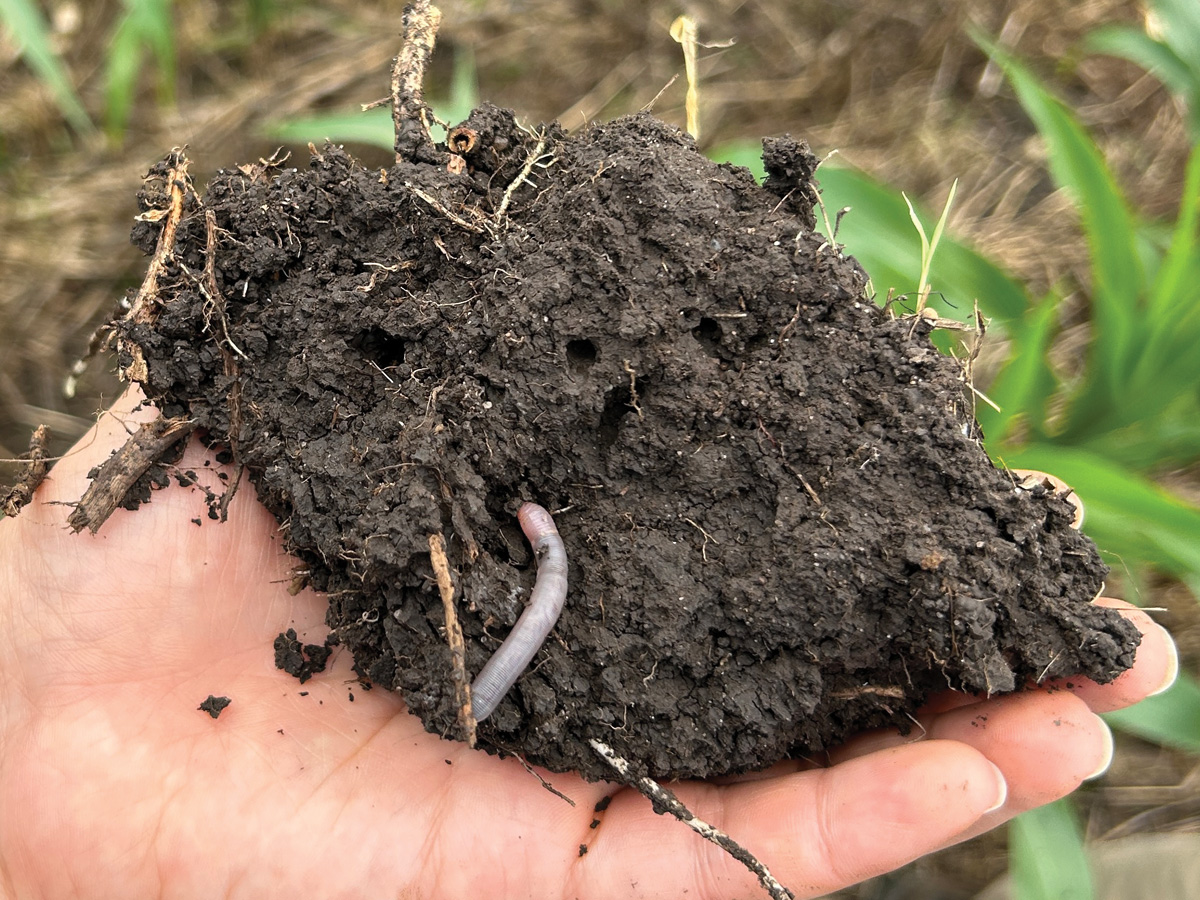
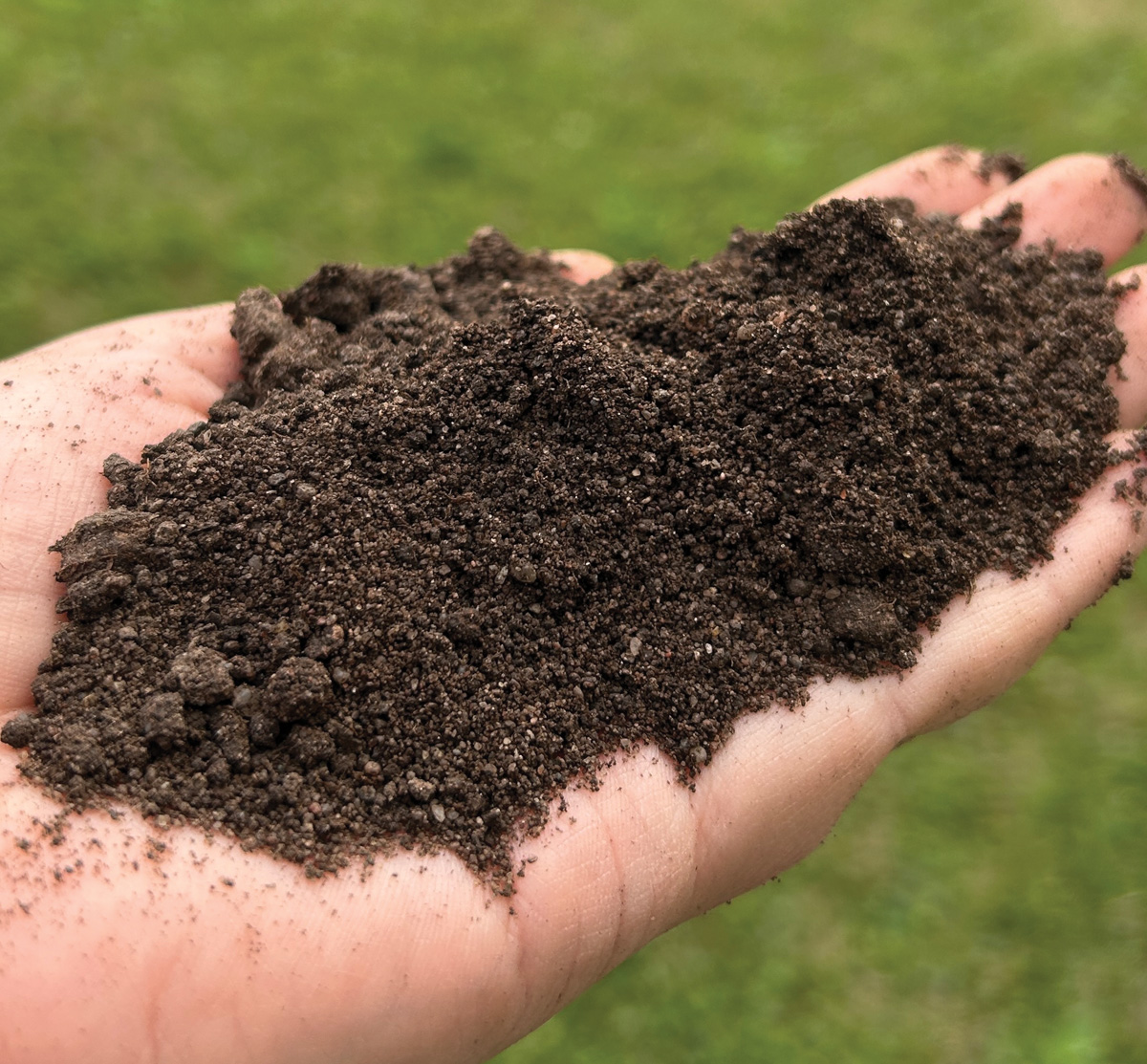
Stable Aggregates Hold Together When Wet
Aggregate stability describes the ability of soil clumps to hold together effectively and resist erosion from rain or strong winds. To assess soil aggregate stability, you can perform a slake test. Dig up a sample from the top 3 to 6 inches of soil, removing any mulch or organic debris, and gently crumble the structure along its natural planes of weakness. Place these aggregates (BB-sized or larger) into a mesh kitchen-sink strainer until level with the top. Set the strainer in a mason jar filled with water for one minute or until the sample is saturated. Remove the strainer, turn it upside down on a flat surface, and assess the structure. Soils with poor structure will fall apart and have a pudding-like consistency. Healthy soil will hold together reasonably well, with few particles dispersing into the water, and will remain intact once pulled out of water.
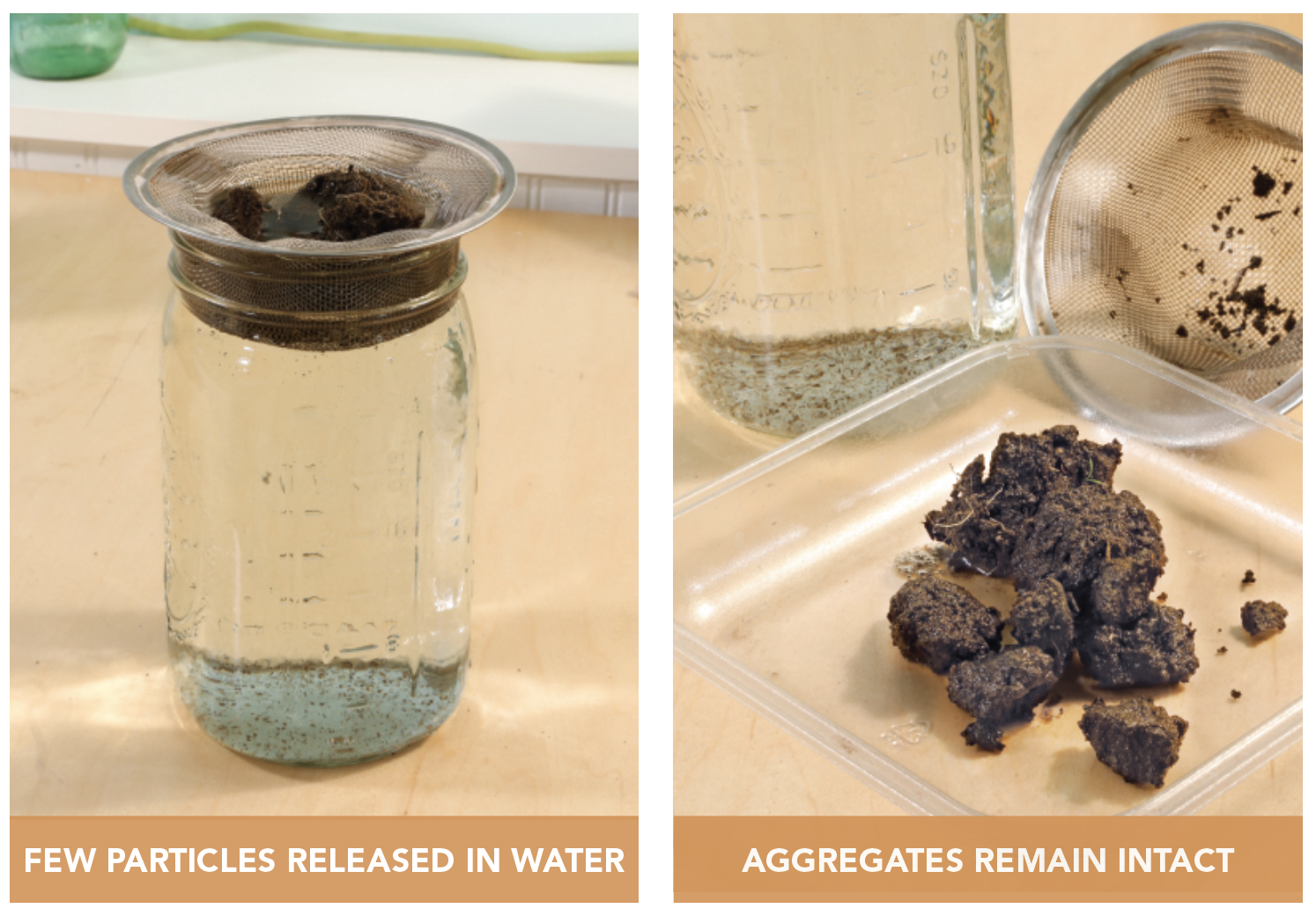
Water Moves Efficiently Through Open Pores
Water movement through the three-dimensional layout of soil pores is essential to plant health; it will infiltrate quickly into healthy soil without ponding on the surface. While soil texture can influence drainage capacity, the large pores that occur in biologically active soil also play a key role in water movement. Soil with poor aggregate stability is vulnerable to the destructive action of raindrops, which can break soil down into individual particles, filling in pore spaces. This results in soil crusting and decreased infiltration.
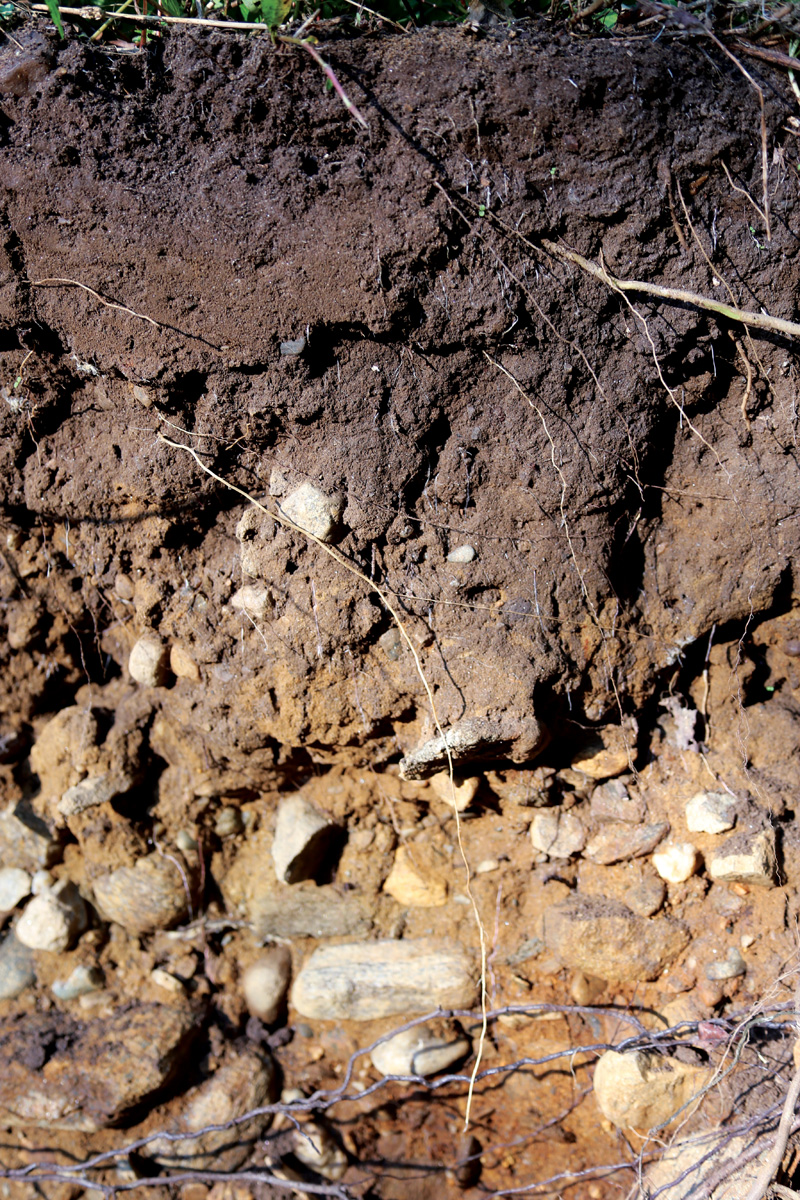
Organic Matter Accumulates Close to the Surface
Organic matter makes up 1 to 5% of most soils. Soil with abundant organic mzatter in various stages of decomposition will have greater nutrient availability, more water-moving pores, and better aggregate stability than poorer soil. Soil texture influences how easily organic matter accumulates; sand naturally holds less organic matter than clay or silt. Sandy soil may have organic matter content less than 1%, silty soil may have 2 to 3%, and clay may have 4 to 5% or more. To determine organic matter content, you can send samples to a laboratory or observe the soil color. A lab test will list organic matter content as percentage, as described above. When observing soil color, keep in mind that soil with more organic matter is typically darker, but soil color will also be impacted by the type of minerals present.
| GARDEN SCIENCE |
Assess water movement
You can use your observation skills to notice trends or patterns in water infiltration after a heavy rain. Does water readily soak into your soil, or are there spots where it ponds on the surface?
A day or two later, when the soil is no longer saturated, try this infiltration test: Find a sturdy cylindrical object, such as a tin can with both ends cut off, or a section of metal or plastic pipe. Using a rubber mallet, pound the cylinder into the ground a few inches. Place the “0” end of a ruler on the soil surface within the cylinder. Pour water into the cylinder until it reaches the 1-inch mark and start a stopwatch immediately. Hit the stopwatch when all the water has gone into the soil. Healthier soil will infiltrate 1 inch of rain in less than 30 seconds. If the water doesn’t infiltrate within a couple of minutes, the soil is considered less healthy.
Steps for Supporting Soil Health
Soil health is dynamic and can change over time, so the way you manage your soil can result in either improvement or degradation of the conditions that support plants and other soil life. The most effective steps you can take to improve soil health will be minimizing disturbance, maximizing soil cover, encouraging an abundance of living roots, and supporting biodiversity.
Cover bare soil
Protecting bare soil surfaces with living, dead, or inert matter will prevent erosion and reduce runoff. Covering the soil with organic materials like compost, shredded leaves, wood chips, or low-growing plants will also increase water-holding capacity and feed the multitudes of soil-dwelling organisms that recycle nutrients and build stable soil aggregates. Most gardeners apply mature compost in spring and spread materials that need more time to
decompose in fall.
Avoid tilling or turning soil whenever possible
Tilling may temporarily reduce compaction but degrades soil health in the long term by destroying aggregates, pore spaces, and microbial habitat. Repeated soil disturbance can lead to issues like ponding, crusting, reduced nutrient cycling, and erosion. With mindful management, plant roots and soil life will work together to break up compacted soil and improve air and water movement.
Suppress Weeds Naturally
Keeping the soil surface covered and decreasing disturbance means that weed shoots and seeds will have a harder time emerging from the soil and taking hold. This is a win-win situation for those of us who are tired of weeding. Without access to sunlight, dormant seeds in the soil will not germinate.
Add organic matter on a regular basis
As it breaks down, organic matter helps bind soil particles together and retains plant-available nutrients. Invertebrates, microbes, and other soil life will convert biological substances in various stages of decomposition into the nutrients your plants need. Developing soil health takes time; it may be a few years before you begin to notice the benefits of using earth-friendly management practices. Rest assured that below the surface, an unseen community is flourishing, supporting healthier plants and a better environment for us all.
| TIP |
It is worth getting your soil tested?
Sending soil samples to a soil testing laboratory gives you reliable, quality-controlled results useful for evaluating baseline properties such as texture and pH, but may not be as well suited to measure properties like water movement and soil structure. You should supplement soil test results with your own field observations to better understand how well your soil is functioning. To get the most out of your soil tests, compare test values every couple of years to see if they are improving. Consider the following before sampling:
How to sample: Each soil testing laboratory will provide information on how to sample. Follow these instructions carefully for the most accurate results.
Where to sample: Take samples from a few different spots in your garden, keeping away from edges, worn paths, or other areas that are not representative of the whole garden.
When to sample: You can take and send samples at any time during the growing season, but sampling around the same time each year will give you the most consistent results for comparison.
Gabi Bolwerk and Bailey Tangen are Extension educators at the University of Minnesota.
Fine Gardening Recommended Products
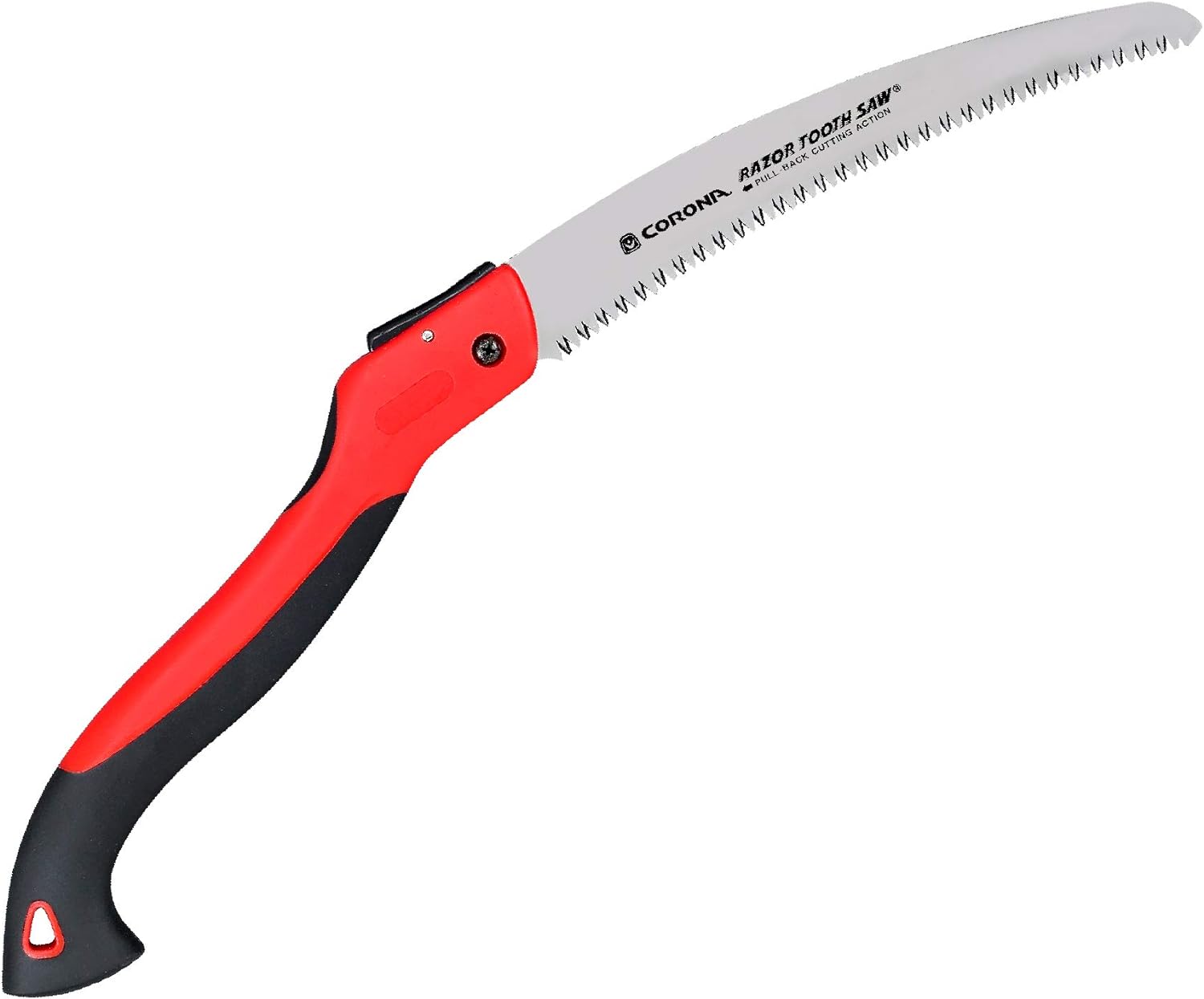
Corona Tools 10-Inch RazorTOOTH Folding Saw
Fine Gardening receives a commission for items purchased through links on this site, including Amazon Associates and other affiliate advertising programs.
3 SIDED RAZOR TEETH FOR EFFICIENT CUTTING: 10″ blade is ideal for cutting 5″–6″ diameter, small to medium, branches. ERGONOMICALLY DESIGNED, COMFORTABLE, CO-MOLDED HANDLE: Provides a comfortable grip for extended use. EASY TO LATCH BLADE PREVENTS INJURY WHEN NOT IN USE: Folding blade is curved, taper-ground, and replaceable. IMPULSE HARDENED TEETH FOR LONG SERVICE LIFE: Extends the life of the tool season after season. UP TO 6 TEETH PER INCH AND CURVED BLADE DESIGN FOR FASTER CUTTING: Cuts are smoother and quicker than a traditional saw.

Fort Vee – Organic Potting Soil Mix
Fine Gardening receives a commission for items purchased through links on this site, including Amazon Associates and other affiliate advertising programs.
PRODUCT DETAILS: Vermont Compost Company Fort Vee Organic Potting Mix A rich, organic, compost-based potting soil that is ideal for growing your veggies, Plants, and herbs free from any harmful chemicals. Our all natural mixed organic garden soil is composed of all-natural ingredients our Plants needed to grow naturally and is a great choice for gardeners who prefer compost-based germination and growing medium. Product Weight: 20 Quarts










